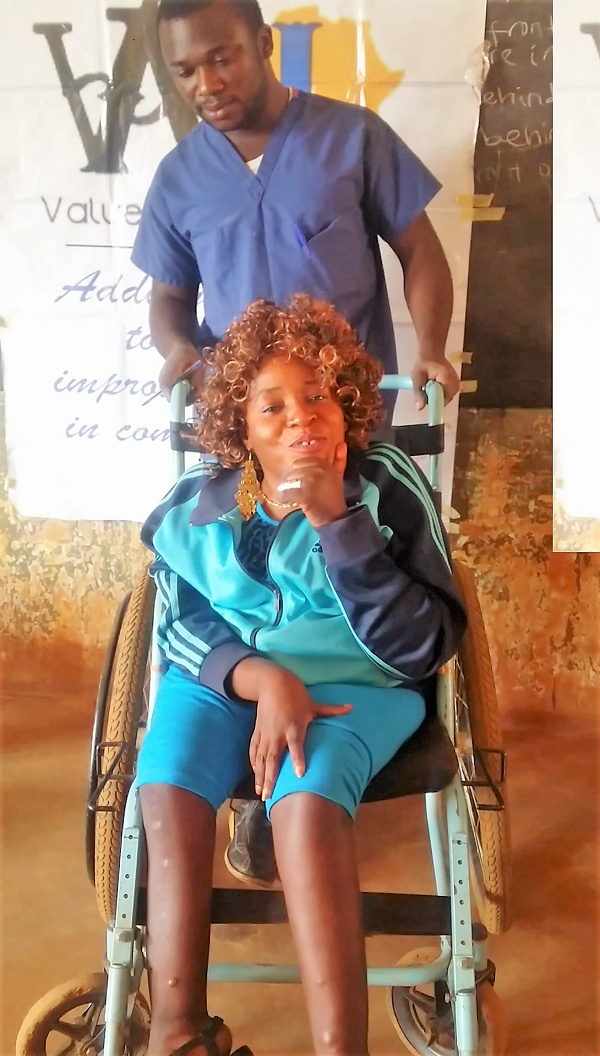The future of health forpersonwith disabilities in Cameroon
Every year, new reforms are put up by international and national bodies to see into the integration of persons with disabilities into societal activities. Disability is an umbrella term, covering impairments, activity limitations and participation restrictions, thus it is not just a health problem but a complex phenomenon, reflecting the interaction between features of a person’s body and features of the society in which he or she lives (WHO, 2016). Even though a minority group, there are no less of humans as their systems undergo normal metabolic processes like others, thus should be treated with the same energy and passion. One could hardly testify that these values exist on the ground but to a greater extent, they end just on paper. It is somewhat unfortunate that the inherent right to life by this minority group doesn’t rest on a single person consequently, nobody wants to take responsibility. Yes because a sequence of events accounts for what exist on the ground, as a result one person cannot be held responsible but everyone. Access to primary healthcare being one of the fundamental rights of every human is the most prominent challenge faced by persons with disabilities in Africa.
In Cameroon, persons with disability face so many challenges benefiting from health care services ranging from accessibility to affordability. Accessibility goes beyond just the ability to accessing the health facility (even though it forms a part of the challenge), but the ability to acquire the same quality of care from the same health facility as any other person. Unfortunately, these challenges have been coded as only not being able to accessing a building while the real problem remains unsolved. It will be of no use for a disabled patient on wheel chair to seek mammography services, body weight; or a deaf to visit a routine health facility just to name a few. This is therefore a clear affirmation to the fact that it isn’t a single person’s liability that this group of persons can’t access health care.

Disabled participant sponsored to screening site
An interview with some health care service providers clearly demonstrates that the absence of a universal coverage scheme for these folks and adapted equipment in their facilities makes it very difficult for them to attend to these folks, hence creating an even steeper gradient of discrimination. Some say even when these patients are given the same care, they leave unsatisfied as they feel they weren’t well understood by the healthcare provider hence a wrong conclusion must have been drawn by the practitioner. Consequently, most of these patients don’t adhere to medical prescriptions. Given that, these service providers are not engineers and will only use instruments provided them by the biomedical engineers, they do not bear the responsibility of not ensuring an inclusive health care service, making the situation more bewildering. Engineers and other manufacturers therefore have a very significant role to ensure an inclusive environment for all by designing adaptive medical devices for these persons.
On the other hand, the theory of entrepreneurship goes just beyond meeting the need for a marginalized population but to a greater extend production is a function of the market size or in other words for-profit. Given that about 53% of persons with disability are financially unable to access primary health care, most wouldn’t be able to afford for the services provided by such innovative technologies. As a result these biomedical companies lack the motivation to produce these equipment, hence one can only envisage a more exclusive society in the future for persons with disabilities in the health sector.
There is always a way out to improve on the inclusion of these persons through the promotion of innovative approach by all stake holders in the provision of health care services to these folks; one of which is adopting a universal health coverage for them; another is tax exemption of companies who produce biomedical devices for persons with disabilities; this will go a long way to compensate for the low profit they will acquire for these commodities. More so, young entrepreneurs could be challenged on venturing on bringing solutions to health problems amongst persons with disabilities while funders also prioritizing their funds on improving the health amongst these group of persons. In addition, sign language could be incorporated as part of the curriculum in all medical schools in Cameroon to facilitate interaction between health care providers and persons with disabilities, while also ensuring that during health promotion programs on Television, a sign language translator interprets for the deaf audience. While a commission for persons with persons with disability be installed at both national and regional levels to ensure the implementation and sustainability of all strategies. If all these are instituted there wouldn’t be any doubt that the future of health for these persons is certain.
By Kyeng Mercy Tetuh (MPH/Epidemiologist)
CEO, Value Health Africa
